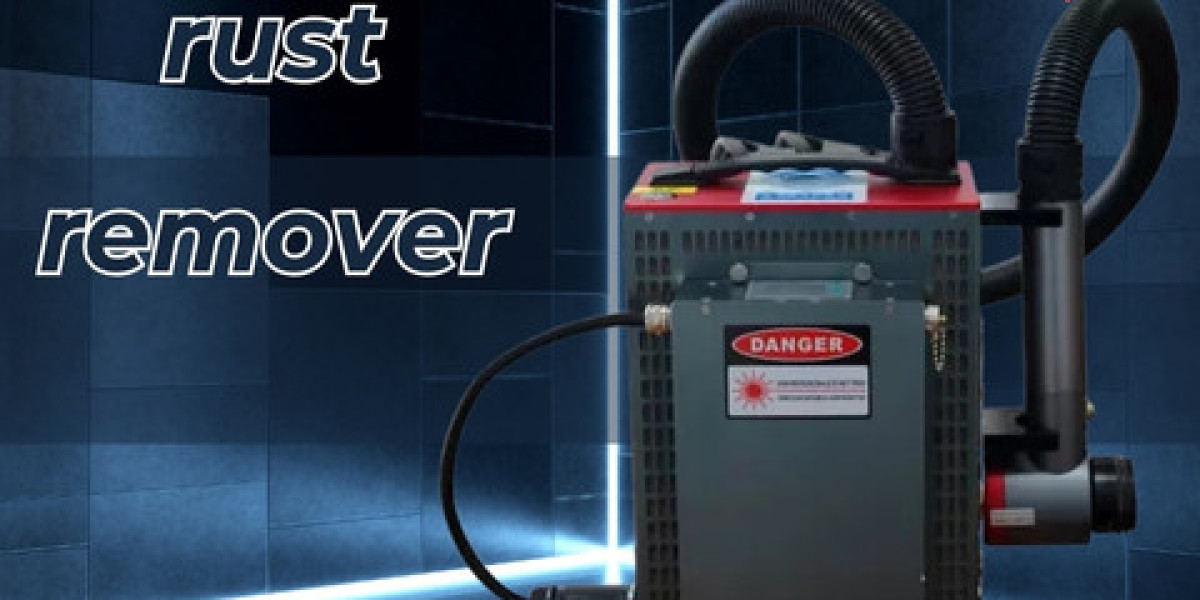At first glance, the concept of removing rust with a beam of light might sound like something out of a science fiction novel. Yet, this is the reality today — not only is it real, but it is revolutionizing industries that rely on metal restoration, preservation, and maintenance. But how does it work? Can it really clean rust without damaging delicate metal surfaces or valuable details? Let’s explore.
What Is a Laser Rust Remover?
A laser rust remover is a device that utilizes a concentrated beam of light — specifically, a laser — to remove rust, paint, or other contaminants from a metal surface. This process is often referred to as laser ablation. The laser targets the oxidation layer (rust) on the surface, heating and evaporating it instantly, without affecting the underlying metal.
This technology is extremely precise, allowing users to clean corrosion from the surface of metal without eroding or altering the structure of the item itself. The laser beam essentially "scans" across the object, vaporizing only the unwanted rust, leaving the original surface intact.
Understanding How It Works
The core mechanism behind a laser rust remover lies in the physics of light and heat. Here's how the process unfolds:
Absorption of Laser Light: Rust (iron oxide) absorbs laser energy more readily than bare metal. When the laser is focused onto the rusted surface, the energy is quickly absorbed by the rust particles.
Rapid Heating and Evaporation: This absorbed energy causes the rust to heat up rapidly, often reaching the point of sublimation — transforming from solid to gas without becoming a liquid.
Separation of Layers: Since the base metal reflects the laser energy rather than absorbing it, it remains unaffected by the heat, allowing the laser to remove only the top oxidized layer.
Fume Extraction and Dust Control: Most modern laser rust remover systems come equipped with fume extractors or vacuum systems that capture the evaporated particles and prevent environmental contamination.
Applications Across Industries
The versatility of laser rust remover technology is what makes it increasingly popular across multiple sectors. Whether it’s restoring a rusted machine component or cleaning an ancient sword blade, the process is equally effective. Some of the most common industries utilizing this technology include:
Automotive: Used to restore classic cars, clean engine components, or prepare metal surfaces for welding.
Manufacturing: Applied in maintenance of industrial machines, tools, and molds.
Aerospace: Ensures precision cleaning of sensitive components without compromising integrity.
Shipbuilding: Cleans hulls and propellers without sandblasting or toxic chemicals.
Conservation: Artifacts and historical pieces are preserved by removing corrosion without damaging inscriptions or fine details.
In each of these sectors, the main selling point is precision. Unlike grinding or chemical solutions, a laser rust remover allows for detailed and controlled restoration that doesn’t compromise the piece’s original form.
How Safe and Environmentally Friendly Is It?
Safety and environmental concerns have always surrounded rust-removal methods. Sandblasting creates airborne particles that are dangerous to inhale. Chemical rust removers often involve acids that can be harmful to both people and the planet. In contrast, a laser rust remover offers a much safer and cleaner alternative.
No Contact Process: Since the laser beam doesn’t physically touch the surface, there’s minimal risk of abrasion, injury, or contamination.
No Harsh Chemicals: No acids, solvents, or harmful agents are used — just concentrated light.
Low Waste: Rust is turned into vapor or fine dust, often immediately extracted through a vacuum system, leaving behind little to no residue.
Operators still wear protective gear, including laser safety glasses, and machines often include shielding or enclosures to avoid direct exposure to the beam. Nonetheless, it’s a cleaner and safer option compared to conventional alternatives.
Why It Matters in Today’s World
In a world that’s pushing toward sustainability, precision, and innovation, the laser rust remover fits in perfectly. It’s more than just a new tool — it’s a new way of thinking about surface restoration. Consider the amount of time, energy, and resources spent on traditional rust removal. Think about the losses due to damaged artifacts or metal fatigue caused by excessive grinding. Now, imagine achieving the same — or better — results using a targeted beam of light.
This tool also empowers small businesses, workshops, and even hobbyists. There are compact models available that can be used in home garages or artisan studios, making the technology more accessible than ever before. Whether you're maintaining a vintage bike or restoring iron garden furniture, this device brings professional-grade restoration into your hands.
Common Myths and Misunderstandings
Let’s address the question posed at the beginning: Can a laser rust remover clean old metal without damaging its surface?
Many people assume that lasers are inherently destructive. After all, they can cut through steel and are used in surgery. However, this misunderstanding stems from confusing industrial cutting lasers with cleaning lasers. The latter is engineered specifically for surface-level treatment, not penetration.
Myth 1: Lasers Burn Through Metal
Not true for cleaning lasers. Their power settings and wavelength are optimized to vaporize surface rust only. The base material is mostly reflective and doesn’t absorb the laser energy the same way rust does.
Myth 2: Only Suitable for Industrial Use
Modern designs include portable and user-friendly options. Some units are as simple to operate as a power drill, making them suitable for anyone with basic training.
Myth 3: It's Just a Gimmick
There’s solid science and engineering behind this technology, and it's already been widely adopted in industries that prioritize surface integrity, such as aerospace and heritage restoration.
Choosing the Right Laser Rust Remover
The market offers a range of options — from entry-level handheld units to high-powered industrial machines. Choosing the right one depends on your needs:
Portability: If you need to move around large metal structures, a handheld device with a long power cord or battery pack is ideal.
Power Output: Higher wattage allows faster cleaning but can also cost more. Match the power to the size and toughness of your tasks.
Cooling Mechanism: Laser systems heat up quickly. Air-cooled models are lighter, while water-cooled ones are more suitable for heavy-duty use.
Whether you're a small garage owner or a large-scale manufacturer, there’s a laser rust remover solution available that fits your budget and task list.
Final Thoughts
The laser rust remover is more than a fancy new gadget — it's a transformative tool that bridges modern technology with practical utility. It allows precision, cleanliness, and control in ways that traditional rust-removal methods simply can’t match. More than just saving time, it preserves the quality, detail, and integrity of metal surfaces, making it indispensable for those who care about both efficiency and craftsmanship.
Whether you’re a mechanic, an artist, a conservator, or an industrial technician, this tool offers a cleaner path forward in the never-ending battle against rust. And yes, it can clean old metal without damaging its surface or losing any of the precious details you aim to preserve.








